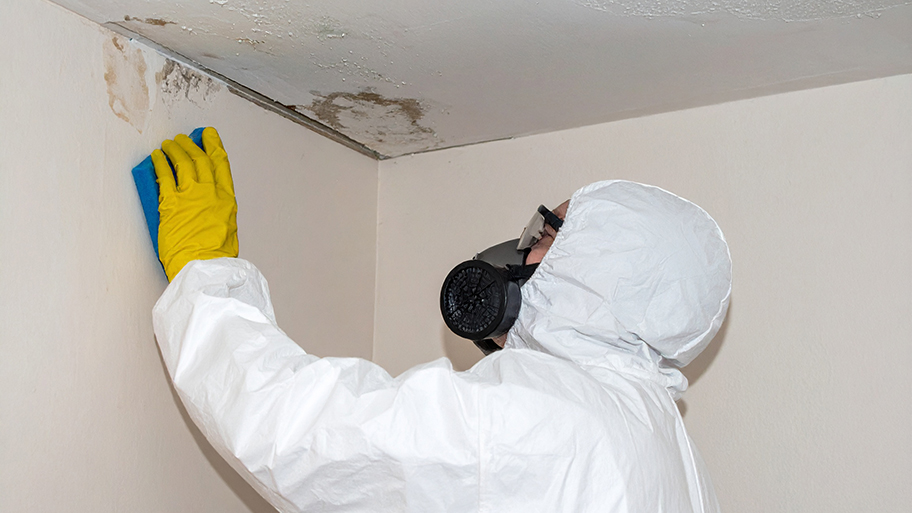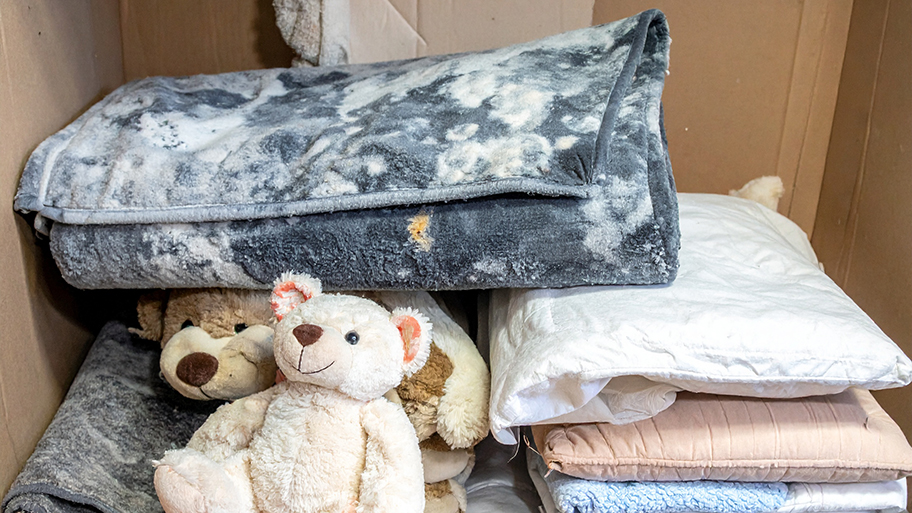
The cost of a mold inspection might seem high, but it’s one of the best investments you can make for your health and home. Read on to learn cost-saving tips.
Take back control of your shower from a pesky pink problem


When you climb into your shower and see moldy pink slime all around you, you may jump back out in a moment of panic. It’s important to note that even though most people call this mold, it’s actually a pink mildew. Of course, not being actual mold doesn’t make it any less gross. Fortunately, figuring out how to get rid of pink mold in the shower isn’t a difficult process, as you only need to follow a few steps using common household ingredients.
We would not recommend tackling the steps required for how to get rid of pink mold in a shower without taking some minor precautions. You should put on rubber gloves and clothing that covers most of your skin. We recommend safety goggles, too.
You don’t want to make contact with pink mold, as it could make you sick through infection if it penetrates your skin through an open wound or cut. It also can cause an infection in the eye through contact.
In a small bucket, mix baking soda and dish soap in a 4-to-1 ratio. If you have a small amount of pink mold in the shower that you need to get rid of, 1/2 a cup of baking soda and 2 tablespoons of dish soap should do the trick. For a larger collection of the pink filmy layer, try 2 cups of baking soda and half a cup of dish soap. Mix it thoroughly.

Use the bristles on the scrub brush to spread the dish soap and baking soda mixture directly onto any areas of the shower with pink mold. Use vertical, horizontal, and circular brush strokes to be certain you are making contact with all of the filmy substance.
If your shower wall has tile and grout, you want to be certain the bristles are reaching all areas of the grout, as pink mold often grows in these areas first. You may want to use an old toothbrush to move into the grout lines or into tight corners.
After finishing, use hot water to wash the bristles on the brush for a few minutes, removing any traces of the pink mold stuck to the bristles.
If you have a removable shower head, you can use this to rinse the areas that you scrubbed. The scrubbing should loosen the pink film, and rinsing it should wash it toward the shower drain.
If you don’t have a removable shower head, you can splash the area with clean water from another bucket. You could also use a wet sponge to pull the pink mold away.
After rinsing the area, take another few minutes to inspect the entire interior of the shower for any additional pink mold. If you find some, repeat steps two and three. Pink mold commonly grows in corners and where two objects meet, such as the showerhead and the wall, or along a sliding shower door track.

Pink mold may appear in the folds of a shower curtain and liner. The best way to clean these items is to place them in a washing machine with laundry detergent that kills bacteria. You also could just replace them.
Don’t place them in the dryer after washing them, as you can rehang them while wet.
Use a disinfectant spray across the interior of the shower. Any commercial mold and mildew cleaning product should do the job.
You could also mix white vinegar and water, using a 1-to-1 ratio, in a spray bottle to disinfect the shower surfaces. Does vinegar kill mold and mildew? Yes, and it’s a highly effective option that may save you some money versus buying a branded product.
Allow the disinfectant solution to sit for at least 10 minutes. Inspect the shower one more time and look for any noticeable stains or spots. Use the scrub brush and more disinfectant spray to attack these areas. Then rinse the entire interior of the shower with hot water.
Although you could hire a local mold removal pro to take care of this problem, most people can take the steps for how to get rid of pink mold in a shower themselves. The process just requires some basic cleaning skills.
Now, if you are unsure whether you are seeing pink mold—which is mildew—or some other form of actual mold, you may want to call a local mold inspector. Mold can appear in many different colors and textures. You certainly don’t want to try to clean dangerous black mold on your own, for example.
If you are sure that the mold in your bathroom is not dangerous, you can take a number of DIY steps for how to get rid of mold in a bathroom.
Even if it’s not a dangerous type of mold, you still may want to call a pro. It’s perfectly understandable to be leery of tackling any mold problem on your own.
From average costs to expert advice, get all the answers you need to get your job done.

The cost of a mold inspection might seem high, but it’s one of the best investments you can make for your health and home. Read on to learn cost-saving tips.

Mold remediation cost can quickly escalate. But if you have mold in your home, the cost for mold remediation is worth it.

Find out how mold sneaks into crawl spaces and impacts your home and health. We unveil the most effective remedies for kicking mold to the curb.

If you aren’t sure what type of mold is in your home, keep reading for a detailed breakdown of white mold vs black mold to see if one or the other is the culprit.

Mold growth in your home poses a serious risk to your belongings and health. But after mold removal, knowing which items to pitch and which you can keep can be confusing. This guide will help you sort everything out so you know what to save.

Mold in your furnace can cause long-term problems for your family. If there’s mold present in your furnace, the spores will spread quickly through the home. Here’s how to take quick action to fix the problem.